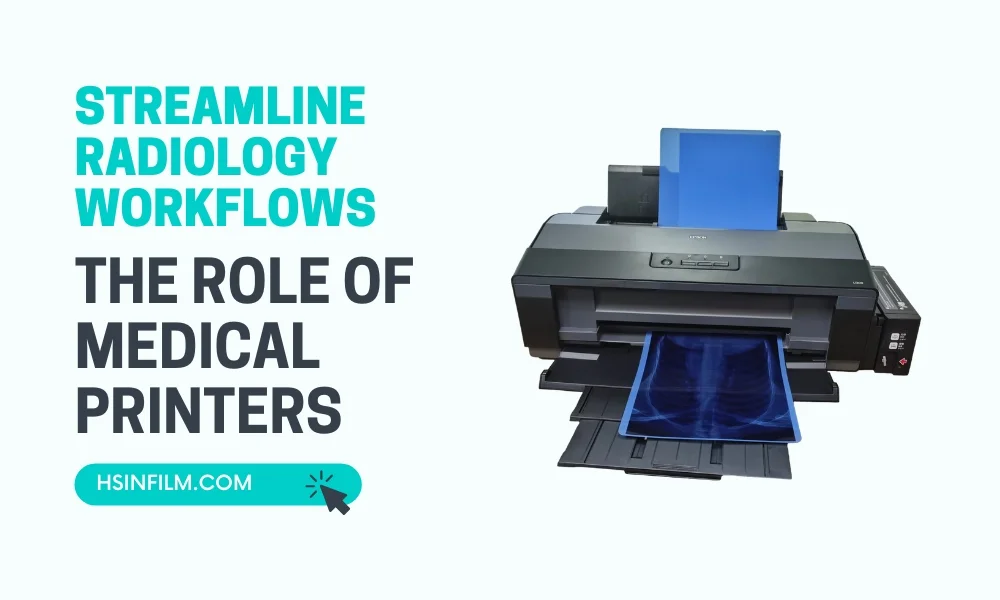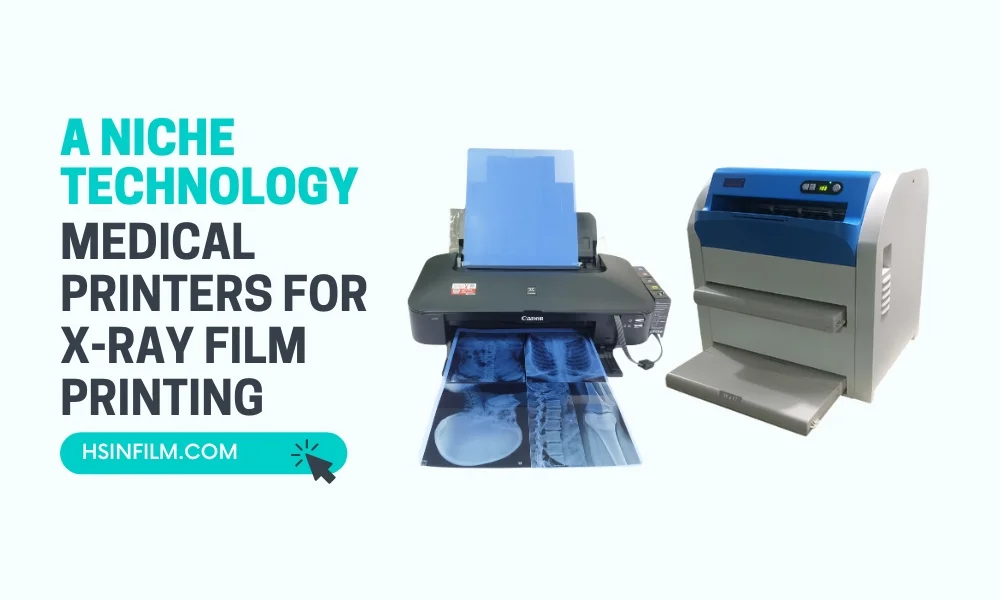The evolution of medical X-ray film technology is one of constant adaptation. Like an old photograph slowly revealing its image when exposed to the right chemicals, our understanding, and application of X-ray technologies have steadily come into sharper focus over time. Let’s traverse this fascinating timeline.
Table of Contents
The Dawn of Discovery (1895): Wilhelm Conrad Röntgen’s X-rays
The journey begins with a serendipitous discovery. In 1895, Wilhelm Conrad Röntgen stumbled upon a mysterious ray that could penetrate opaque objects. This invisible ray, which he named “X” for the unknown, unveiled a new realm where the internal structures of living beings could be visualized.
Birth of the Medical X-Ray (Early 20th Century)
Almost immediately after Röntgen’s revelation, physicians grasped the immense diagnostic potential of X-rays. However, the initial images were of modest quality and required prolonged exposure times, which unfortunately subjected patients to high radiation doses.
Refinement and Advancement (Mid-20th Century)
As the decades rolled on, x-ray film technology experienced rapid innovation. There were leaps in:
- Film Sensitivity: Faster films were developed, reducing exposure times and radiation dose.
- Image Clarity: The grain size in the film was optimized, resulting in clearer and more detailed images.
- Contrast: Enhanced film formulations improved the differentiation between tissues.
From Analog to Digital (Evolution of Medical X-ray Film Technology)
The late 20th century witnessed the digital revolution, and X-ray technology was no exception.
- Computed Radiography (CR): Utilized phosphor plates instead of traditional film. These plates store the image, which is then read and digitized by a special scanner.
- Digital Radiography (DR): Utilizes flat-panel detectors, transmitting real-time images to computer screens, bypassing the need for physical film or plate scanning.
Modern Innovations: Enhanced Imaging and Reduced Risks
Today’s X-ray technology places a premium on patient safety and image precision:
- Low-dose Radiography: Advanced detectors capture high-quality images using significantly less radiation.
- Dual-energy X-ray Absorptiometry (DEXA): This allows for bone density assessments, helping in the diagnosis of conditions like osteoporosis.
- Real-time Fluoroscopy: Offers real-time moving images, invaluable in various diagnostic and therapeutic procedures.
Personalized Care through Precision Imaging
The horizon of X-ray technology is not only expanding but also becoming more personalized. Cutting-edge technology can cater to individual patient’s needs, ensuring that each image provides the most valuable information possible for diagnosis or treatment.
- Image Personalization: Modern X-ray systems are capable of adjusting the imaging parameters for each patient’s specific anatomy. This not only optimizes image quality but also ensures patients receive the minimum radiation dose necessary.
3D Imaging and Tomosynthesis
The future of X-ray technology extends beyond two dimensions. Three-dimensional imaging provides a more comprehensive view of the body, offering clinicians a more detailed and nuanced picture.
- Digital Tomosynthesis: This technology takes multiple X-ray images from different angles, which are then combined to form a 3D image. Tomosynthesis allows for more precise localization of abnormalities and can reduce the overlap of structures, which is particularly useful in areas such as breast imaging.
Portable and Mobile X-Ray Systems
Innovation isn’t just about improving image quality; it’s also about accessibility. Portable X-ray units have revolutionized patient care, especially in emergency, intensive care, and rural settings.
- Portable X-Ray Units: Modern portable units are lightweight, maneuverable, and wireless, enabling high-quality imaging right at the patient’s bedside. This can expedite care and decrease the risks associated with patient transportation.
The Integration of X-Ray Technology with Electronic Health Records (EHRs)

As healthcare becomes increasingly digitized, the integration of X-ray images with EHRs allows for more coordinated and efficient patient care.
- EHR Integration: Digital X-ray images can be seamlessly incorporated into a patient’s electronic record, providing physicians with immediate access to results, reducing redundancy, and facilitating collaborative care.
Conclusion
The evolution of medical X-ray film technology stands testament to humanity’s relentless quest for knowledge and betterment. From crude images on glass plates to AI-enhanced digital marvels, the journey of X-ray technology mirrors our broader voyage of discovery. As we stand on the cusp of future innovations, one can only wonder: What’s next in this illuminating saga?
FAQ
1. What is medical x-ray film technology?
Medical x-ray film technology refers to the use of specialized films sensitive to x-ray radiation to capture images of the internal structures of the human body during diagnostic imaging procedures.
2. How has medical x-ray film technology evolved over time?
Initially, medical x-ray film technology used traditional silver-based films. However, with advancements, it transitioned to digital radiography, eliminating the need for physical films. Digital systems offer instant image capture, storage, and manipulation, revolutionizing diagnostic imaging.
3. What are the benefits of digital radiography over traditional x-ray films?
Digital radiography offers several advantages, including immediate image availability, enhanced image quality through digital manipulation, reduced radiation exposure, and simplified storage and retrieval of patient data.
4. Are there different types of medical x-ray films available?
Yes, there are various types of medical x-ray films, including dry film, thermal film, and laser film. Each type has its unique characteristics and applications, catering to different imaging needs and preferences.
5. How does digital x-ray technology impact healthcare practices?
Digital x-ray technology streamlines healthcare practices by improving workflow efficiency, enabling remote image access for consultation, reducing costs associated with film processing and storage, and enhancing diagnostic accuracy through advanced image manipulation tools.
6. Are traditional x-ray films still used in healthcare settings?
While digital radiography has become the standard in many healthcare facilities, traditional x-ray films are still used in some settings. However, their usage is decreasing as digital technology continues to advance and become more accessible.
7. What factors should healthcare providers consider when choosing between digital and traditional x-ray technologies?
Healthcare providers should consider factors such as budget, imaging requirements, workflow efficiency, staff training, and compatibility with existing systems when deciding between digital and traditional x-ray technologies.
8. How does the evolution of medical x-ray film technology impact patient care?
The evolution of medical x-ray film technology has significantly improved patient care by facilitating faster diagnosis, enhancing image quality for more accurate interpretations, reducing radiation exposure, and enabling seamless integration with electronic health records for comprehensive patient management.
9. Can medical x-ray film technology be customized to meet specific healthcare needs?
Yes, medical x-ray film technology can be customized to meet specific healthcare needs through the development of specialized films, software enhancements, and integration with other medical imaging modalities to provide tailored solutions for different clinical scenarios.
10. What does the future hold for medical x-ray film technology?
The future of medical x-ray film technology lies in continued innovation, with advancements focusing on improving image quality, reducing radiation dose, enhancing workflow efficiency, and integrating artificial intelligence for automated image analysis, ultimately advancing patient care and diagnostic capabilities in healthcare.















